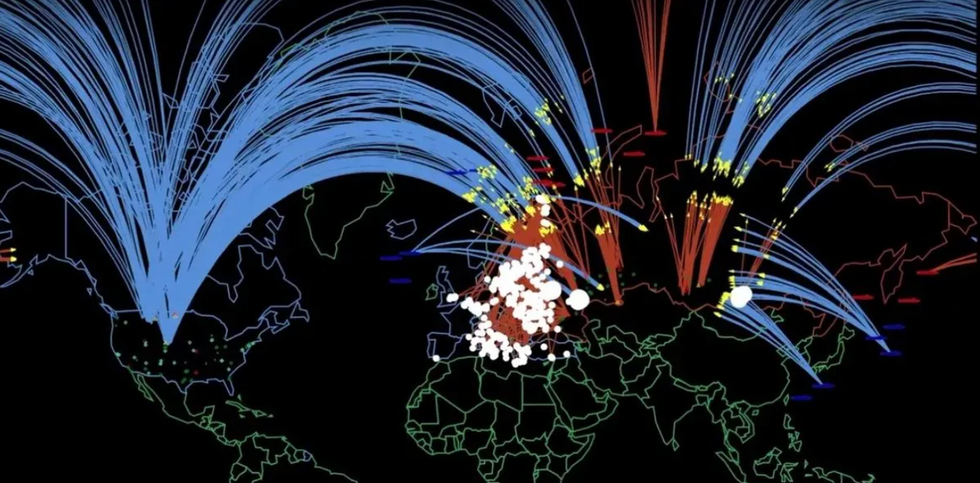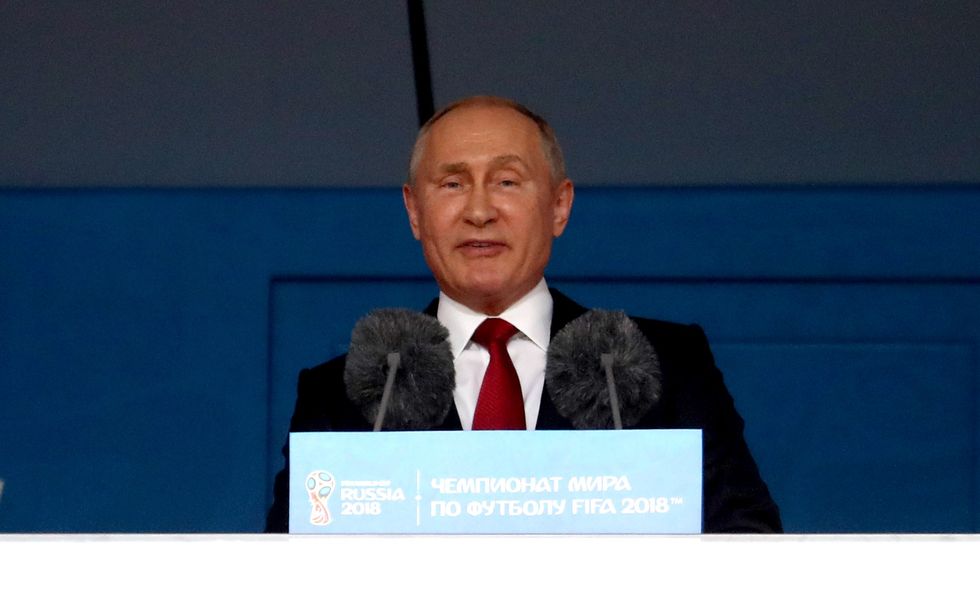Russia nuclear bomber
GB News
The Russian president ratified his nuclear doctrine last week in response to President Joe Biden permitting Ukraine to strike Russian targets with US-supplied long-range missiles
Don't Miss
Most Read
Trending on GB News
A top British defence chief has revealed why Vladimir Putin's threat of deploying nuclear weapons in Ukraine is so "effective" on the battlefield and on the psychology of the West.
Air Vice-Marshal Sean Bell's assessment comes after the Russian president ratified his country's nuclear doctrine last week.
Putin initially proposed the changes in September but formally approved them hours after Moscow claimed that Ukraine had fired six US-supplied ATACMS (Army Tactical Missile System) ballistic missiles into Russia's Bryansk region last Tuesday.
The decision to sign off the long-range missiles for use on Russian soil appeared to provoke the escalation, but Putin has rattled the nuclear sabre at various points throughout his invasion.

It is estimated that there would be more than 90 million people dead and injured within the first few hours of a nuclear exchange between Russia and America
Princeton University/Nuclear Futures Lab
According to Sean Bell, who served 32 years in the RAF and commanded 1 (Fighter) Squadron and the Harrier Force, Putin's threat is more carefully calibrated than the West gives him credit for.
"What Putin is doing is very effective. He's capitalising on the fact that none of our politicians and very few of our population have memories of the Cold War," he told GB News.
As Bells points out, as soon as the spectre of nuclear war is raised, he "rattles the cage and everybody shies away scared".
However, his threat is a red herring as the current moment is nothing like the dark days of the Cold War, he says.
The ex-RAF pilot explained: "When I was younger, we were living with the omnipresent threats of nuclear war. We were planning to do one-way missions. That was the war we were preparing for. And we did all sorts of things in terms of preparation for it. We are nowhere near that."
In Bell's reading, waving the threat of nuclear armageddon allows Putin to unleash hell in Ukraine without the West stepping in.
It partly explains the Biden administration's foreign policy approach, which has been muddled and marked by paralysis, the military analyst claims.
Ultimately, there are no winners in a nuclear exchange between the superpowers, which is why the threat of mutually assured destruction has endured for decades.
Putin is therefore a paper tiger and the West needs to call his bluff, Bell says.
LATEST MEMBERSHIP DEVELOPMENTS

Putin is a paper tiger and the West needs to call his bluff, Bell says
PAWhat is Putin's revised nuclear doctrine?
Putin of Russia has signed a revised nuclear doctrine that lowers the threshold under which Russia might consider deploying its nuclear weapons.
The doctrine now states that any conventional attack on Russia by a non-nuclear state that is supported or participated in by a nuclear power will be considered a joint attack.
This means that if a non-nuclear country like Ukraine, supported by nuclear nations such as the US or Nato members, attacks Russia, it could theoretically trigger a nuclear response from Russia.
The doctrine includes a broader range of scenarios under which nuclear weapons might be used. This includes a massive air attack involving not just ballistic missiles but also cruise missiles, drones, and other flying vehicles.
This significantly expands the potential triggers beyond what was previously outlined, which was mainly focused on ballistic missile attacks.
It also mentions that Russia could use nuclear weapons in response to an attack posing a "critical threat to sovereignty and territorial integrity" of Russia or its ally Belarus.
Any aggression against Russia by a state that is part of a military bloc or coalition will be viewed as an attack by the entire bloc, which could involve Nato indirectly.








